| Minivan; Built in USA |
|
|
| Good condition price range: $1,000 – $2,400* |
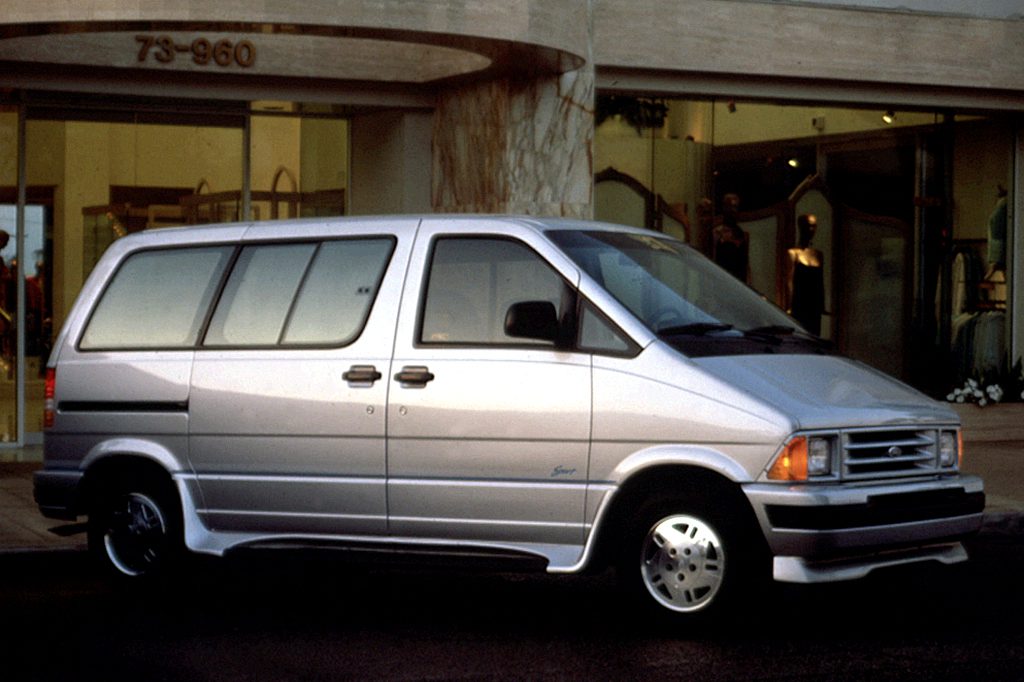
1991 Ford Aerostar XL
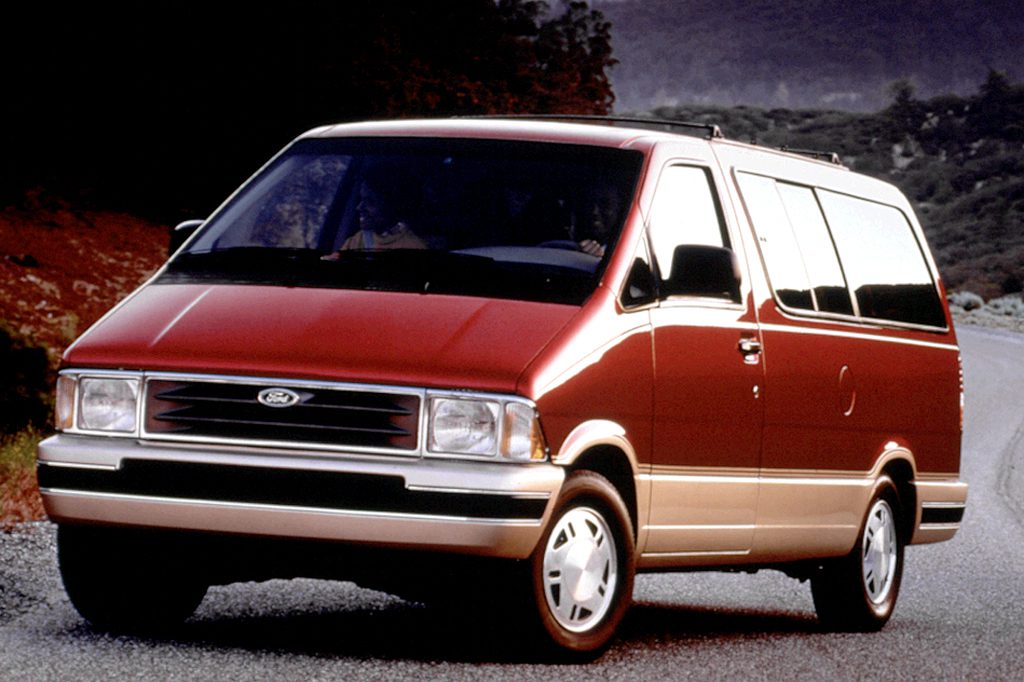
1993 Ford Aerostar
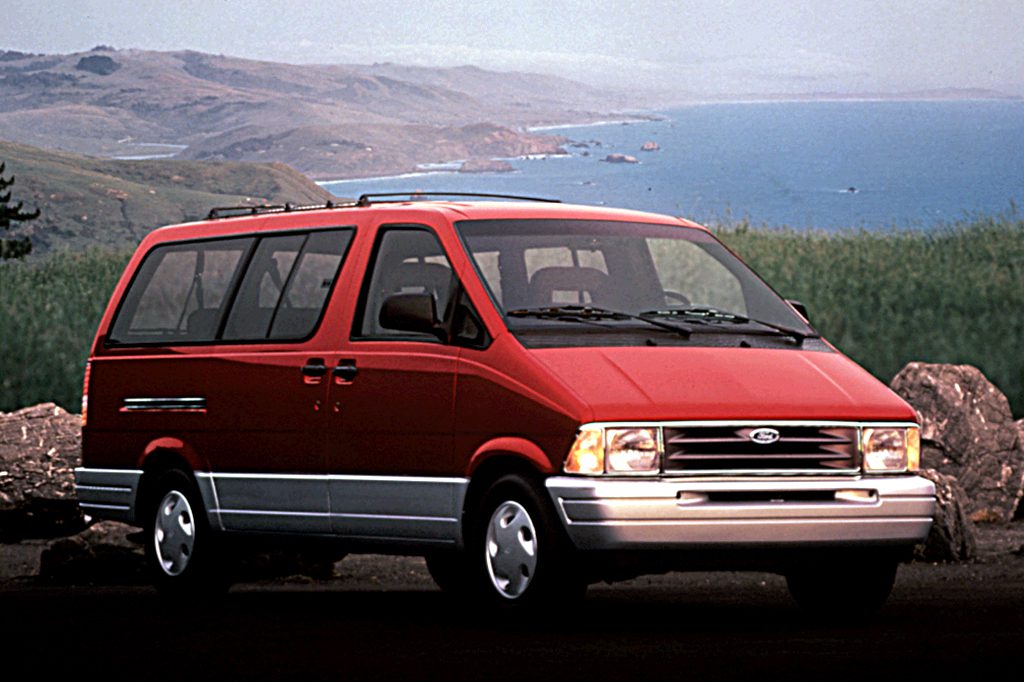
1996 Ford Aerostar
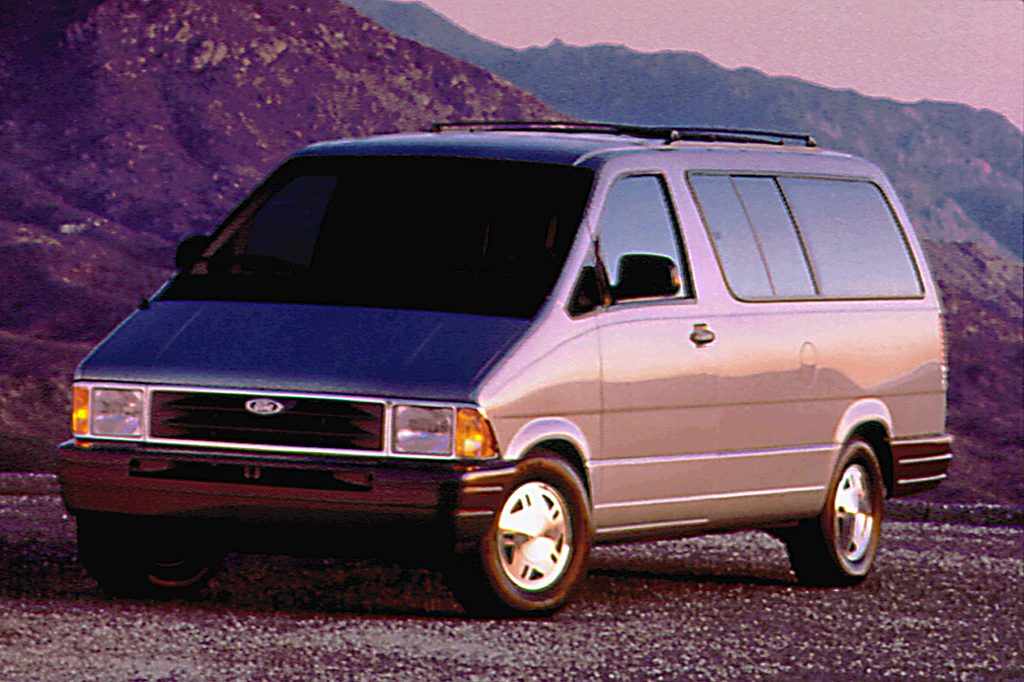
1997 Ford Aerostar
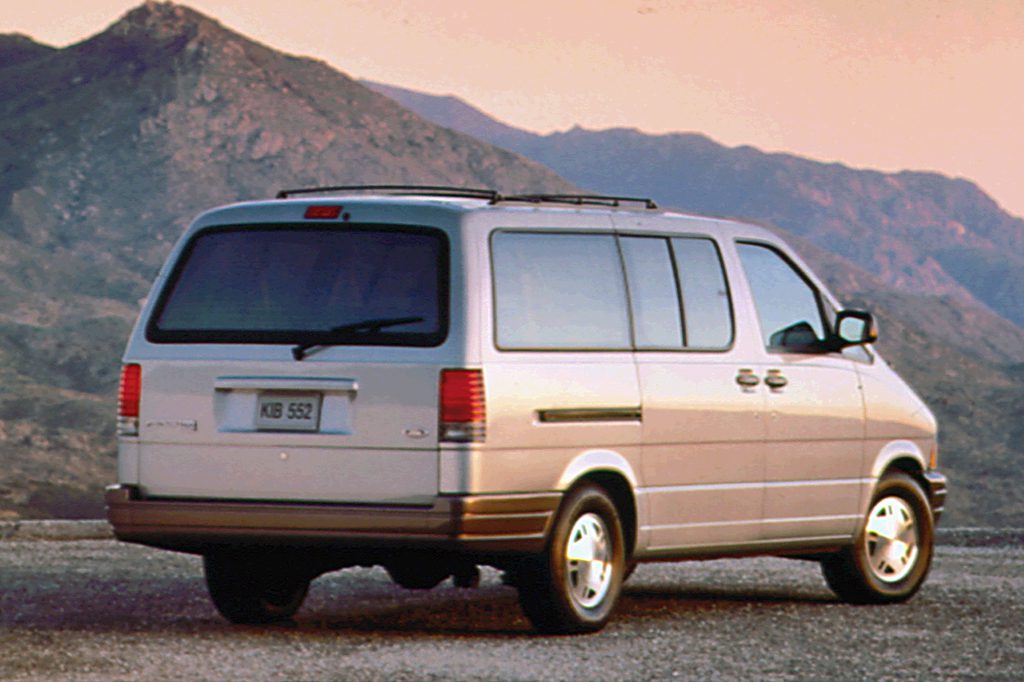
1997 Ford Aerostar
| Pros: |
|
| Cons: |
|
Aerostar and the Chevrolet Astro/GMC Safari are better suited to heavy-duty work, such as hauling hefty payloads or towing trailers (up to 4800 pounds), than the league-leading front-drive Chrysler minivans.
Overview
Introduced way back in 1986, Ford’s rear-drive minivan came in both passenger and cargo-hauling form. A stretched van joined the original for 1989, on the same 118.9-inch wheelbase but with 15.4 inches tacked onto the rear. An available 4.0-liter V6 and heavy-duty 4-speed automatic transmission arrived for 1990. Also new for 1990: full-time 4-wheel drive (as an option) and standard antilock rear brakes. Seating for five was standard; space for seven optional. Six trim levels were available.
Yearly Updates
| 1991 Aerostar A new sport appearance package for regular-length XL and XLT included forged alloy wheels and silver-color body accents (including a front air dam and side running boards). A door ajar light was added for models with dual rear doors. |
| 1992 Aerostar A driver-side airbag and front-end facelift came for ’92. The new dashboard got redesigned headlamp and climate controls. The automatic-transmission shift lever moved from the floor to the steering column. High-back front buckets now were standard. Rear outboard seats got lap/shoulder belts. A new grille and flush aero headlamps were installed. |
| 1993 Aerostar New optional integrated child safety seats became available, folding out from the middle bench. |
| 1994 Aerostar A high-mounted third brake light was installed for ’94. Aerostars still came in XL, XL Plus, XLT, and Eddie Bauer trim. |
| 1995 Aerostar Produced in regular or extended form, the Aerostar XLT complemented Ford,s new front-drive Windstar minivan. Side-impact beams were added to both front doors and the sliding side door. Permanent 4-wheel drive remained available, only in extended-length models. No more manual-shift Aerostars went on sale. |
| 1996 Aerostar A new 4-speed automatic transmission with electronic shift controls became available. Radios got larger buttons. Optional premium sound systems were upgraded to 24 watts. The optional auto-climate system was redesigned with new air conditioning controls. |
| 1997 Aerostar A new 5-speed automatic transmission arrived for ’97, which turned out to be Aerostar,s final season. The 5-speed came only with the 4.0-liter engine, which was standard on 4WD Aerostars. This minivan was discontinued at the end of the year. |
